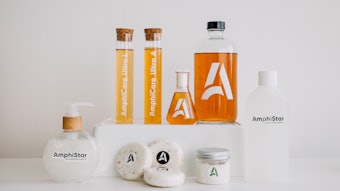This first of a four-part series on SLNs and NLCs (see Part II, Part III and Part IV) describes the differences between the two types and their delivery capabilities.
Log in to view the full article
This first of a four-part series on SLNs and NLCs (see Part II, Part III and Part IV) describes the differences between the two types and their delivery capabilities.
Solid lipid nanoparticles (SLNs) originally were introduced as an improvement over liposome delivery systems.1 This suggests that liposomes, reviewed previously in 2005,2 have some disadvantages. Advantages include the fact that they consist of biocompatible ingredients and are capable of including both water- and lipid-soluble actives; in addition, their membrane permeability and consequential release of actives can be regulated via the creation of single or multiple lamellar vesicles. However, disadvantages include their limited capability to enhance the stability of the incorporated active, as well as limited physical stability in real-life formulations.3
SLNs were therefore introduced in the early 1990s—and they are little more than o/w emulsions in which the oil droplet has been replaced by a solid fat at room and body temperature. Obviously, this overcomes the two disadvantages of liposomes described above in that they provide better chemical protection of the active and even greater control over its release, and better physical stability in real-life formulations, in addition to the other benefits of liposomes. The fats used to create SLNs are often biocompatible. In fact, most frequently, they are excipients already used in pharmaceutical and cosmetic products. Another added benefit is their relatively easy production, which frequently employs high pressure homogenization and microemulsion dilution.
Production methods and ingredient selection will be discussed in this first of a two-part series on SLNs and nanostructured lipid carriers (NLCs), whereas part two will discuss their characterization and formulation issues. Despite their benefits, however, SLNs have not yet been introduced to the cosmetic or pharmaceutical markets, although NLCs were introduced to the cosmetic market in 2005 in a repair cream and lotiona; currently, more than 30 NLC-containing products are available worldwide.
SLN and NLC Structures
As noted, SLNs are essentially “solidified” o/w emulsions in which the oil droplets have been replaced by fat droplets. They typically contain 0.1–30% w/w solid lipid dispersed in an aqueous medium that, if necessary, is stabilized with 0.5–5.0% surfactant. Their mean particle size is 40–1,000 nm and as such, can be considered nano-sized. The active ingredients in SLNs are distributed throughout the lipid phase at a relatively low loading capacity.4
In NLCs, on the other hand, the oil phase is a blend of solid and liquid lipids in which the solid to liquid ratio is typically between 70/30 and 99.9/0.1, and where the fat content may be as high as 95%. As a consequence, NLC suspensions contain much less water than SLN suspensions. They also have a significantly higher loading capacity for active ingredients although they may suffer from active ingredient expulsion during storage.4 Figure 1 illustrates the differences between SLNs and NLCs.
The purity of the lipids used to create SLNs is obviously much higher than that of NLCs since high purity lipids have a greater tendency to crystallize and, in turn, a much higher degree of crystallinity within the solid lipid phase when they solidify. Three different forms of lipid crystallinity have been described in the literature: an amorphous α form, an orthorhombic perpendicular β´ form, and a triclinic parallel β polymorphic form;5 the degree of crystallinity increases from the α, to the β´, to the β conformation.
Lipids normally take from minutes to sometimes days before they settle into their final, most stable, high crystallinity phase, which is why active ingredients may be expelled from SLNs during storage. This process can be observed by differential scanning calorimetry (DSC). Studies by Westesen et al. showed sharp peaks at high temperatures, i.e. perfect crystals, for the bulk lipids used to create the SLNs but wider peaks at lower temperatures, i.e. imperfect crystals, after mixing these bulk lipids with other ingredients.6 Such varying degrees of crystallinity can be used to influence the release of actives, as will be discussed in the next section.
Manufacturing SLNs and NLCs
Various methods to produce SLNs and NLCs exist, including high shear homogenization; ultrasound; high pressure homogenization, which can be subdivided into hot and cold homogenization; solvent emulsification/evaporation; and the microemulsion technique. Of these techniques, hot high pressure homogenization is generally the most frequently used.
High shear homogenization and ultrasound: The high shear homogenization and ultrasound methods are relatively easy but unpredictable processes. Basically, large-sized lipid particles are crushed into smaller particles via a high-speed, rotating metal blade. Although the typical particle size produced is between 100 and 200 nm, some microparticles may still be present. Metal contaminations, especially with the use of ultrasound, are also possible.
With these methods, the variables that must be considered include emulsification time, stirring rate and cooling speed. Mehnert and Mäder, for instance, describe a combination of lipids requiring 8 min of emulsification at 20,000 rpm and 10 min of cooling at room temperature as optimal processing conditions. Another combination of lipids required 10 min of emulsification at 25,000 rpm and 5 min of cooling at 5,000 rpm and 16°C. Higher stirring rates slightly improved polydispersity but did not reduce particle size.7 From these variations it can be concluded that high shear homogenization must be optimized on a case-by-case basis.
High pressure homogenization: High pressure homogenizing is by far the most popular method to produce both SLNs and NLCs. In fact, it is not too different from the normal production o/w emulsions. A schematic overview of both the hot and cold homogenization process is shown in Figure 2.
Similar to the emulsification procedure, the lipid phase is heated and the lipophilic cosmetic active or active pharmaceutical ingredient (API) is added. For emulsions, this is typically carried out at 80°C but for SLNs, this temperature must be above the melting point of the fat mixture; for NLCs, it must be above the melting point of the fat and oil mixture. The active or API is subsequently dissolved in this melted oil fraction, at which point the formulator has the choice to homogenize, under high pressure, a hot or a cooled pre-emulsion. The mixture can be immediately cooled so that it solidifies, a practice used particularly when working with thermolabile actives. The resulting lipid block is subsequently grinded to create lipid microparticles, which are then added to an aqueous surfactant formulation and mixed to create a cold pre-emulsion. Or, if the active ingredient is not thermolabile, the hot lipid/active ingredient melt can be dispersed in a hot surfactant solution in water and mixed to create a hot pre-emulsion.
Next, the cold or hot pre-emulsion is poured into the high pressure homogenizer and a thick, white paste or aqueous suspension emerges. Oftentimes, this cycle is repeated but typically there is no further reduction in particle size after three to five consecutive runs at 500–1,500 bar.7 It should be noted that especially for thermolabile actives, during each cycle, the temperature in the homogenizer and thus of the pre-emulsion will increase by roughly 10°C for every 500 bar of pressure since the speed with which the particles emerge from the high pressure chamber can be as high as 1,000 km/hr. This is why most high pressure homogenizers also have a temperature control function to cool the SLNs and NLCs produced.
At this point, the hot nano-emulsion must cool, which sounds simple but is in fact one of the most critical steps in the whole production process for SLNs and NLCs. The ratio between the lipid and active ingredient content will determine the type of SLN/NLC produced. Figure 3 provides a schematic representation.
As the preparation cools, the lipid phase will solidify, and depending on the lipid to active ratio, three different scenarios become possible. If the ratio is ideal, the lipid and active will precipitate together and create a nanoparticle with a constant concentration as a function of depth from the particle surface. This is called a Type I SLN/NLC. A second scenario occurs when there is relatively too much lipid; in such Type II nanoparticles, the lipid precipitates first, thus lowering the lipid content of the mixture until the ideal lipid to active ratio is reached and a constant content of active precipitates within the lipid. These nanoparticles will be active-enriched on the outside. Finally, if there is relatively too much active, the active will precipitate first, lowering the active content until the ideal lipid to active ratio is reached and a constant content of active precipitates with the lipid. Such Type III nanoparticles will be active-enriched on the inside.
Actives having higher water solubilities tend to create Type II SLNs/NLCs. If the solubility of the active in water increases at elevated water temperatures, a reasonable to substantial amount of active will escape to the water phase. When the temperature is subsequently lowered—and with it the solubility of the active in the water phase, the active ingredient will partition back into the partially formed nanoparticles. Therefore, the outer layer will be active-enriched on the outside, i.e., a Type II SLN or NLC.
The SLN/NLC type is important because it determines the release characteristics of the particle. Type I SLNs and NLCs (see Figure 3) give a sustained, constant and relatively long release of active. Type II SLNs/NLCs deliver a relatively short, burst release of active. Finally, Type III SLNs/NLCs provide a delayed, relatively high release of active. It is therefore critical to identify the optimal ratio between lipid and active ingredient; this is addressed later in this article. However, the following general rule may save the formulator time: if Type I SLNs/NLCs are desired, note that cold high pressure homogenization will always yield Type I particles.
Solvent emulsification and evaporation: Solvent emulsification and evaporation is another production method for SLNs and NLCs but it is a rather unusual and less popular method due to the use of organic solvents. The oil phase contains lipid as well as organic solvent. The organic solvent is removed under reduced pressure (40–60 mbar), resulting in particle sizes that are dependent upon the surfactant/co-surfactant blend. The advantage of this method is that hardly any thermal stress is applied to any of the chemicals in the formulation.
Microemulsion method: A fourth process is the microemulsion method, which is said to not require energy. In this method, one starts with a hot transparent o/w-microemulsion that is quickly diluted into cold water (2–3°C) in a ratio of 1/25 to 1/50 (microemulsion/water). The shock in temperature causes the lipid to solidify and in this way, a rather low yield SLN/NLC preparation is obtained. The yield is always low due to the strong dilution step of the microemulsion with cold water.
For more information on the methods described here, readers may refer to Reference 7 and the references therein. The production method chosen will depend on variables such as the thermolability of the active and the particle size required for the end product.
Lipid, Wax and Emulsifier Options for SLNs and NLCs
Mehnert and Mäder have listed a whole series of fats typically used in the production of SLNs.7 The lipid phase is made from physiological lipids, which decreases the chances of acute or chronic toxicity. These lipids can be subdivided into triglycerides and hard fat types. Whereas many medium chain triglycerides are used in cosmetics, the triglycerides used for SLNs are fats with a much higher crystallinity, such as tricaprin (tri-C10), trilaurin (tri-C12), trimyristin (tri-C14), tripalmitin (tri-C16) and tristearin (tri-C18). The higher crystallinity of these molecules is due to the identical nature of their side chains. Of the hard fat types, glyceryl monostearate, glyceryl behenate and stearic acid are especially used, while partial triglycerides and waxes like cetyl palmitate are only occasionally used.7 The choice of emulsifier is less critical; all classes of emulsifiers with respect to molecular weight and charge have been used to stabilize the lipid dispersions in SLNs and NLCs. It has been found that a combination of emulsifiers may prevent particle agglomeration more efficiently, similar to emulsion stabilization. The best results are often obtained with 5% sodium cholate or poloxamer 188, or 10% tyloxapol.
The concentration of surfactant is important and a sufficient amount must be used to cover the newly formed surface areas created during the high pressure homogenization process. In addition, this coverage must occur quickly since the timing of the redistribution process of emulsifier molecules varies between particle surfaces, water-solubilized monomers, and micelles or liposomes. In general, sodium lauryl sulfate and other low molecular weight surfactants rapidly achieve a new equilibrium, whereas redistribution takes longer with high molecular weight surfactants such as poloxamer and lecithin. However, it is not recommended to use rapidly distributing surfactants like SDS exclusively because their ability to cover surfaces rapidly is often combined with considerable water solubility and toxicity.7 This is why poloxamer 188, a polyoxyethylene polyoxypropylene block polymer, and tyloxapol, an oxyethylated-t-octylphenolpolymethylene polymer, are so popular for the production of SLNs and NLCs. The selection criteria for these materials are described later.
Actives in SLNs and NLCs
In 2007, a review article was published listing many well-known drugs that have been incorporated into lipid particles for administration onto the skin and/or mucosa.8 The list also included chemicals intended for cosmetic benefits. The drugs included betamethasone valerate, chloramphenicol, cortisone, dexamethasone, hydrocortisone, indomethacin, metronidazole, pilocarpine and progesterone; the cosmetic actives included the hair growth promoter benzyl nicotinate and the anti-dandruff agent ketoconazole.8 The interesting and logical characteristic in common between all these materials is that they are all lipophilic, which would be expected since they must be dissolved in the lipid melt to produce SLNs and NLCs.
In 2009, another review was published listing examples of APIs incorporated into NLCs as well as some well-known cosmetic actives: ascorbyl palmitate, beta-carotene and coenzyme Q10.3 Again, only lipophilic actives were incorporated. While the idea of incorporating more water-soluble actives is appealing from a thermodynamic point of view, it is unfavorable from a physicochemical point of view since during the heating process, the solubility of the active in the water phase will be increased to the point that the active will likely never return to the lipid phase of the SLN or NLC.
However, adsorption is a different option, which was attempted for proteins;9 although in this case, formulators must consider association efficiency rather than encapsulation efficiency. The association efficiency varied dramatically for the large peptides investigated, ranging from 2–5% for thymopentin with SLNs produced via the microemulsion technique, to 100% for bovine serum albumin with SLNs produced via hot high pressure homogenization as well as the microemulsion method; lysozymes with SLNs produced by cold high pressure homogenization; and streptavidin with SLNs produced by the microemulsion method (or dilution).10 Generally stated, it can be concluded that SLNs and NLCs have until now demonstrated their use as skin delivery systems for lipophilic APIs and cosmetic active ingredients only.
As noted, the first cosmetic products using the NLC technology entered the market in October 2005,4 only a few years after NLCs were first investigated. Since then, a whole series of products has followed incorporating cosmetic actives including, among others: avocado oil, black currant seed oil, co-enzyme Q10, kukuinut oil, Macadamia ternifolia seed oil, Manoi tiare tahiti, and ω-3 and ω-6 unsaturated fatty acids. And even very recently, new papers have emerged in the scientific literature describing the cosmetic benefits of NLC-containing products.11 NLCs therefore still have a long road ahead of them.
Selecting Lipids, Waxes and Actives for Use in SLNs, NLCs
This column thus far has discussed how lipid nanoparticle-containing preparations differ from o/w-emulsions, differences between SLNs and NLCs and how they are produced, and the typical constituents of each type; but for cosmetic formulators who have never made SLNs or NLCs, the selection criteria for the lipids, waxes and actives to be included in SLNs or NLCs are lacking. For instance, can one use any fatty material, or does the choice of excipient influence the skin delivery from SLNs and NLCs to the same extent as was described for o/w emulsions?12 The following section aims to provide some guidelines, but it will become clear that research in this field is only rudimentary and observational rather than based on systematic studies investigating the influence of the chemical nature of excipients on the various characteristics of SLNs and NLCs—such as particle size, release characteristics, polydispersity, etc.; these characteristics will be discussed in the second part of this review.
Lipids: The choice of the lipid(s) used to produce SLNs and NLCs is, of course, very important. When higher melting point lipids are used, larger nanoparticles generally are obtained. This can be explained by the fact that higher melting point lipids result in a higher viscosity of the dispersed phase and therefore, at the same level of energy input, in larger particles. The reversed argument is also true: because homogenization is less efficient at the same level of energy input, increased particle agglomeration is obtained; therefore, broader particle distribution is obtained when using higher melting point lipids.7 For instance, the average particle size of ingredients such as hydrogenated coco-glycerideb SLNs was found to be significantly smaller (117.0 ± 1.8 nm) than the size of tristearinc SLNs (175.1 ± 3.5 nm).13
Hydrogenated coco-glycerides contain shorter fatty acid chains and considerable amounts of mono- and diglycerides, which possess surface active properties. The melting points of hydrogenated coco-glyceridesb and tristearinc are 33.5–35.5°C and 68°C, respectively, therefore SLNs made with the former are smaller than those made with the latter. The reduced homogenization efficiency leading to larger particles is also the reason that increasing the lipid content above 5–10% in most cases results in larger particles (including microparticles) and broader particle size distributions.
Other, less clear variables that affect the characteristics of SLNs and NLCs include: the velocity of lipid crystallization; lipid hydrophilicity—i.e., self-emulsifying properties; the shape of the crystal, since this determines the surface area; and variations in the chemical composition of an ingredient from the same or different suppliers, and even between batches of the same excipient from the same supplier. Impurities, for instance, can have a considerable impact on the quality of SLN dispersions by affecting the zeta potential or retarding the crystallization process.7
Waxes: The available information about the influence of waxes on the behavior of SLNs is much sparser. Jenna and Gohla compared SLNs made of wax and glycerides and concluded that SLNs based on glycerides such as glyceryl monostearate and glyceryl behenate showed good drug encapsulation but poor physical stability, while SLNs based on wax such as beeswax and cetyl palmitate showed the opposite.14 The waxes were clearly more crystalline than the lipids, but later research showed that careful mixing of the wax with other lipids could reduce crystallinity. For instance, Attama and Müller-Goymann showed that the crystallinity of beeswax was reduced by the inclusion of heterolipids like phosphatidyl cholined or homolipids like goat fate.1
General criteria: The general purpose of SLNs and NLCs is to deliver lipophilic active ingredients and APIs into the skin. To achieve this, the entrapment efficiency (EE%) and the loading capacity (LC%) are important. These are determined by the capability of the lipid phase to dissolve the active at 80°C as well as the crystallization behavior during cooling, described above. Mixing very different lipids leads to imperfections in the crystal structure, allowing for a higher LC% but also potentially causing supercooling due to the difference between melting and crystallization temperatures.
The level of supercooling is different for each lipid and can be easily assessed by DSC. When working with pure lipids such as triacylglycerols having a high melting point and a high crystallization temperature, the addition of lipid molecules with small chain length will decrease the temperatures of both phenomena. This means that the amount of supercooling may increase; i.e., the difference between the melting and crystallization temperatures may be increased (see Figure 4).
This figure illustrates the impact of the chemical difference between a pure lipid and an added lipid. Looking from the left to the right of the graph, the chemical difference between the pure lipid and the added lipid increases. The opposite is also valid; the addition of long-chain fatty molecules to lipid materials of low crystallization temperatures decreases the amount of supercooling. During preparation, the emulsified dispersion must be cooled below the critical crystallization temperature of the lipid materials, i.e. much below their melting temperature, in order to crystallize and obtain solid lipid particles. If this critical temperature is not reached, the particles remain in the liquid state and an emulsion of supercooled, liquid droplets is obtained rather than the desired SLN or NLC dispersion.8 As a consequence, all the benefits of SLNs and NLCs are lost since such systems no longer offer the enhanced physical and chemical stability above o/w emulsions.
All the above described scientific background is summarized in two schematics. In Figure 5a, the influence of the crystallinity state of the lipids, which can be modulated via the choice of lipid, on the efficacy of SLNs and NLCs as skin delivery systems is shown. In Figure 5b, some practical experiments that assist in selecting the right lipids are indicated.
The formulator must first decide whether SLNs or NLCs will be developed. In the majority of cases, the choice will be for NLCs due to their higher LC%. Then, a couple of suitable lipids are selected based on high and low solubilities for the active ingredient (see Figure 5b). Therefore, solubility experiments are performed at 80°C in which the chemical stability of the active ingredient is also measured. Wherever possible, it is recommended to use hot high pressure homogenization but for this process, it is essential that the active ingredient is not thermolabile.
If the two lipids combined in NLCs are chemically too different, the amount of supercooling may increase to unacceptable levels (see Figure 4) and this should also be considered. This can be determined by testing the solidification of the lipid mix at room temperature (see Figure 5b). When it solidifies, no phase separation between the lipids or visible expulsion of the active ingredient should be observed. A separation of the two lipids indicates the choice of the lipids in the mixture is not optimal and another liquid lipid (oil) should be selected. Visible expulsion of the active also indicates another liquid lipid should be selected since the LC% will be too low. It may also indicate that too much active has been included, and therefore a reduction of the level of active in the lipid mixture may also be advisable. Remember that the lipid/active ratio also determines the release characteristics from the SLN/NLC, as illustrated in Figure 3.
Summary
This first of a two-part series on SLNs and NLCs describes the differences between the two types and their delivery capabilities. The terms solid lipid nanoparticles and nanostructured lipid carriers are not very useful to distinguish these two delivery systems since both are solid, both are lipids, both are nanoparticles, and both are carrier systems. The only real difference between the two is the purity of the single lipid used in SLNs or multiple lipids used, i.e. one solid and one liquid, in NLCs. This factor has an enormous impact on the crystallinity of the lipid phase, which subsequently influences the loading capacity of the system for encapsulated active ingredients or API.
Whereas most formulators would likely opt for NLCs due to their higher loading capability, care must be taken to select two lipids that are not chemically too different otherwise supercooling will prevent crystallization of the internal oil droplet, resulting in a normal emulsion. Typical ingredients such as lipids, waxes and emulsifiers have been discussed as well as production methods for SLNs and NLCs. Hot high pressure homogenization is by far the most frequently used method but the thermolability of the active ingredient or API should be considered. Finally, some general guidelines for the selection of the lipids in combination with the active ingredient and API have been provided.
Following these guidelines, Teeranachaideekul et al.15 designed a series of NLCs that were subsequently characterized. The second part of this review will detail the characterization methods of these SLNs and NLCs, their skin moisturizing properties, other formulation factors as well as their enhancement factors, i.e., the extent to which they enhance skin delivery.
References
Send e-mail to [email protected].
1. AA Attama and CC Müller-Goymann, Effect of beeswax modification on the lipid matrix and solid lipid nanoparticle crystallinity, Coll Surf A Physicochem Eng Aspects 315 189–195 (2008)
2. JW Wiechers, Delivery Review—Looking at Liposomes, Cosm & Toil 120 (6) 77–86 (2005)
3. S Doktorovova and EB Souto, Nanostructured lipid carrier-based hydrogel formulations for drug delivery: A comprehensive review, Expert Opin Drug Del 6 165–176 (2009)
4. J Pardeike, A Hommoss and RH Müller, Lipid nanoparticles (SLN, NLC) in cosmetic and pharmaceutical dermal products, Int J Pharm 366 170–184 (2009)
5. K Westesen, B Siekmann and MHJ Koch, Investigations on the physical state of lipid nanoparticles by synchrotron radiation X-ray diffraction, Int J Pharm 93 189–199 (1993)
6. K Westesen, H Bunjes and MHJ Koch, Physicochemical characterization of lipid nanoparticles and evaluation of their drug loading capacity and sustained release potential, J Control Rel 48 223–236 (1997)
7. W Mehnert and K Mäder, Solid lipid nanoparticles. Production, application and applications, Adv Drug Del Rev 47 165–196 (2001) 8. EB Souto, AJ Almeida and RH Müller, Lipid nanoparticles (SLN, NLC) for cutaneous drug delivery: Structure, protection and skin effects, J Biomed Nanotechnol 3 317–331 (2007)
9. AJ Almeida and EB Souto, Solid lipid nanoparticles as a drug delivery system for peptides and proteins, Adv Drug Del Rev 59 478–490 (2007)
10. S Martins, B Sarmento, DC Ferreira and EB Souto, Lipid-based colloidal carriers for peptide and protein delivery—liposomes versus lipid nanoparticles, Int J Nanomed 2 595–607 (2007)
11. J Pardeike, K Schwabe and RH Müller, Influence of nanostructured lipid carriers (NLC) on the physical properties of the Cutanova Nanorepair Q10 cream and the in vivo skin hydration effect, Int J Pharm 396 166–173 (2010)
12. JW Wiechers, CL Kelly, TG Blease and JC Dederen, Formulating for Efficacy, Int J Cosmet Sci 26 173–182 (2004)
13. P Ahlin, J Kristl and J Šmid-Kobar, Optimization of procedure parameters and physical stability of solid lipid nanoparticles in dispersions, Acta Pharm 48 259–267 (1998)
14. V Jenning and S Gohla, Comparison of wax and glyceride solid lipid nanoparticles (SLN), Int J Pharm 196 219–222 (2000)
15. V Teeranachaideekul, EB Souto, RH Müller and VB Junyaprasert, Physicochemical characterization and in vitro release studies of ascorbyl palmitate-loaded semisolid nanostructured lipid carriers (NLC gels), J Microencaps 25 111–120 (2008)



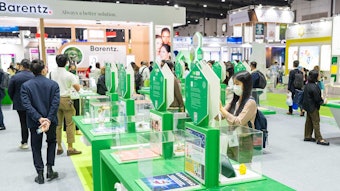
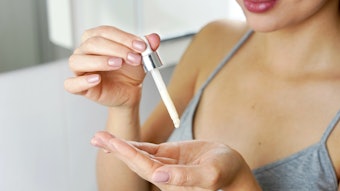


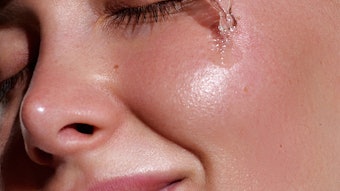
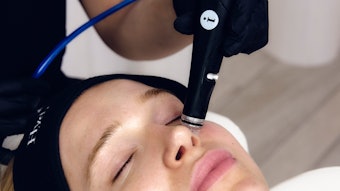
![Lead Image2 [nas] 800x450px](https://img.cosmeticsandtoiletries.com/files/base/allured/all/image/2024/10/Lead_image2__NAS__800x450px.6704042d635b8.png?auto=format%2Ccompress&fit=crop&h=191&q=70&w=340)
